Archaeologists digging at Hisarlık Hill have unearthed evidence including ancient sling stones that could prove, more so than ever before, that the Trojan War was more than just a myth.
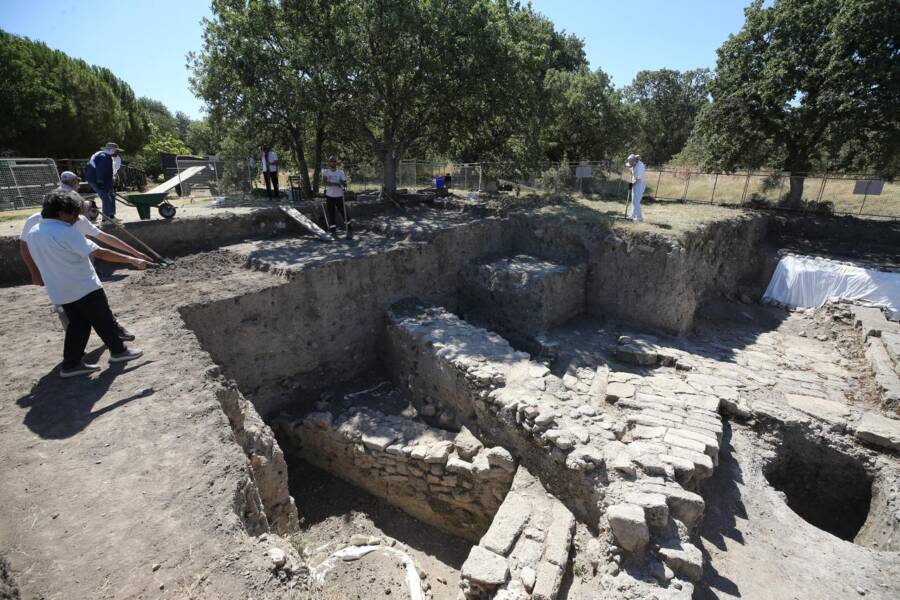
Anadolu Agency PhotoCurrent excavations are focusing on two areas in Turkey’s Çanakkale province dubbed Troy 6 and Troy 7.
The Trojan War remains perhaps the most legendary clash in the ancient world, due to its prominence in the Greek poet Homer’s Iliad. Much of Homer’s work was heavily embellished and mythologized, but for centuries, scholars have wondered whether the Trojan War really happened or was merely the stuff of myth.
Ongoing excavations at the presumed ruins of Troy in Turkey, however, are uncovering new evidence that could prove that the Trojan War was real. This season alone, researchers digging at Hisarlık Hill in Turkey’s Çanakkale province have uncovered several artifacts from the Late Bronze Age, a period widely believed to be the era of the Trojan War. Among these discoveries were 3,500-year-old sling stones in front of a palace structure, likely evidence of a great battle.
Efforts to excavate the Troy site have ramped up in recent years, though the area has been of archaeological interest since the initial discoveries there in the 19th century. Current efforts that are part of Turkey’s Legacy for the Future Project are specifically honing in on the site’s archaeological layer that dates to around the 13th century B.C.E., perhaps the time of the Trojan War.
The Discovery Of Late Bronze Age Relics Possibly Related To The Trojan War
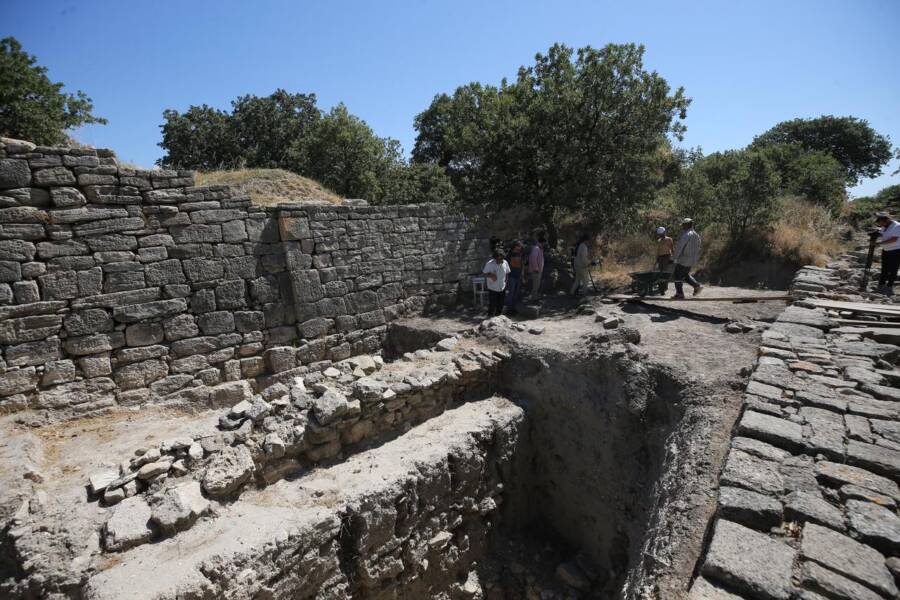
Anadolu Agency PhotoArchaeologists working to excavate a destruction layer dated back to the Late Bronze Age.
Speaking to Türkiye Today, Professor Rüstem Aslan of Çanakkale Onsekiz Mart University, the excavation team leader, outlined this season’s goals: “In our work this season, we aim to reach the destruction layer of the Late Bronze Age that is thought to be linked to the Trojan War.”
Previous excavations have uncovered signs of violence and destruction, but Aslan noted that it is difficult to directly tie such evidence specifically to ancient warfare. Excavations in the 1930s and 1980s did, however, uncover burnt layers, damaged buildings, and haphazardly buried skeletons, which could signify battle. The regions in which they were found have been dubbed Troy 6 and Troy 7.
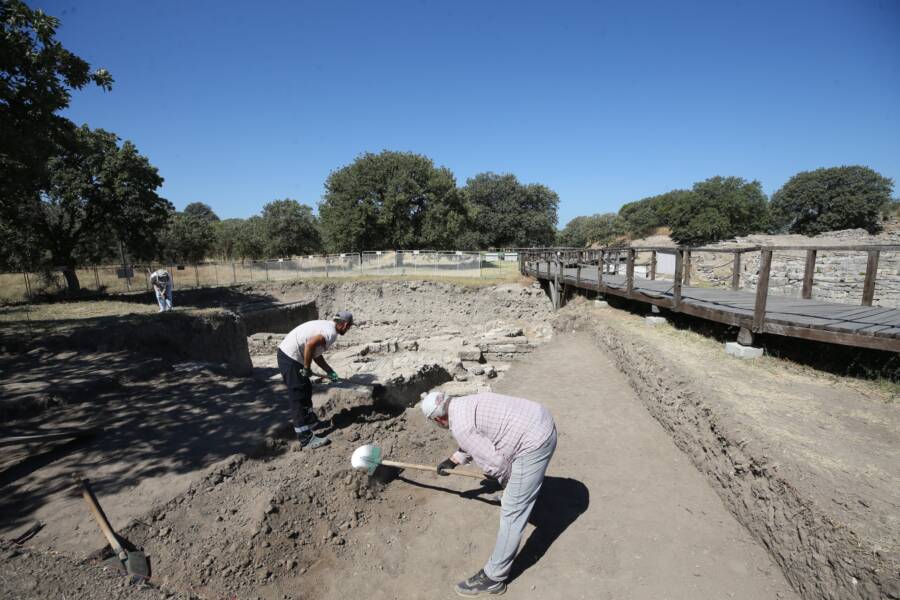
Anadolu Agency PhotoPrevious years’ excavations showed signs of wartime fires and weaponry.
Those two layers are the focus of this season’s excavations, Aslan told the Anadolu Agency.
“These destruction layers contain war tools and disturbed human remains that could indicate conflict,” Aslan said. “We encountered the first hints of such layers in the area between the agora, the palace, and the defensive walls.”
Last year, archaeologists found two Late Bronze Age arrowheads in that same area, finds that helped inform this year’s excavations. According to Aslan, those arrowheads suggested there may be more “significant finds” to be revealed from further excavation of the area.
“We found the first clues in previous years,” he said. “This year, under the Legacy for the Future project, we plan to expand the research area and expect surprising results.”
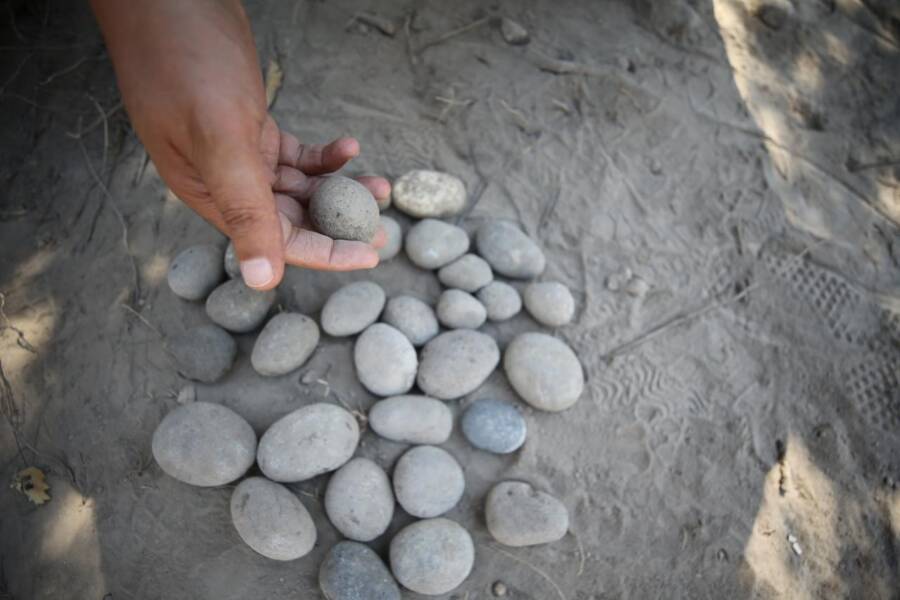
Anadolu Agency PhotoA cache of sling stones near the palace walls show evidence of both defensive and offensive use.
It didn’t take long for the team to find what they were looking for. Although excavations have only just begun for the season, archaeologists have already unearthed a cache of sling stones, made of clay and river stone, in front of the palace. These stones were highly important weapons during the Bronze Age, Aslan noted, and their presence indicates that the area was used for both defensive and offensive purposes in battle.
“The fact that so many sling stones were uncovered in such a small area in front of the palace points to an activity related to defense or assault,” he said. “Last year, we also found two arrowheads from the same period in this area, which indicates that more significant discoveries may follow.”
Was The Trojan War Real? Separating Reality From Myth

Public DomainThe Golden Apple of Discord, which set in motion the events that sparked the Trojan War.
For centuries, the Trojan War was widely regarded as pure myth. In Homer’s tale, the war is sparked when Prince Paris of Troy was approached by the goddesses Hera, Athena, and Aphrodite and asked to determine which of the three was the “fairest.” Each of the goddesses tempted Paris with a gift in exchange for his vote: wisdom, power, or love.
Paris deemed Aphrodite to be the fairest goddess and received the gift of love. She offered him the hand of the world’s most beautiful woman: Helen, Queen of Sparta. Helen fell deeply in love with Paris and left Sparta to join him in Troy — much to the chagrin of her husband, King Menelaus. In response, Menelaus rallied the armies of Greece to attack Troy and return his wife to him.
Athena and Hera, feeling slighted by Paris’ choice, sided with the Greeks. Homer’s Iliad primarily follows the hero Achilles and his deeds during the war, while his other famous tale, the Odyssey, follows the hero Odysseus on his journey home after the war’s end. The story of the Trojan War concludes with a Greek victory, thanks in large part to their clever ruse involving the Trojan Horse, which allows them to sneak soldiers behind Troy’s walls by concealing them inside the belly of a massive wooden horse that was presented to the Trojans as a gift.
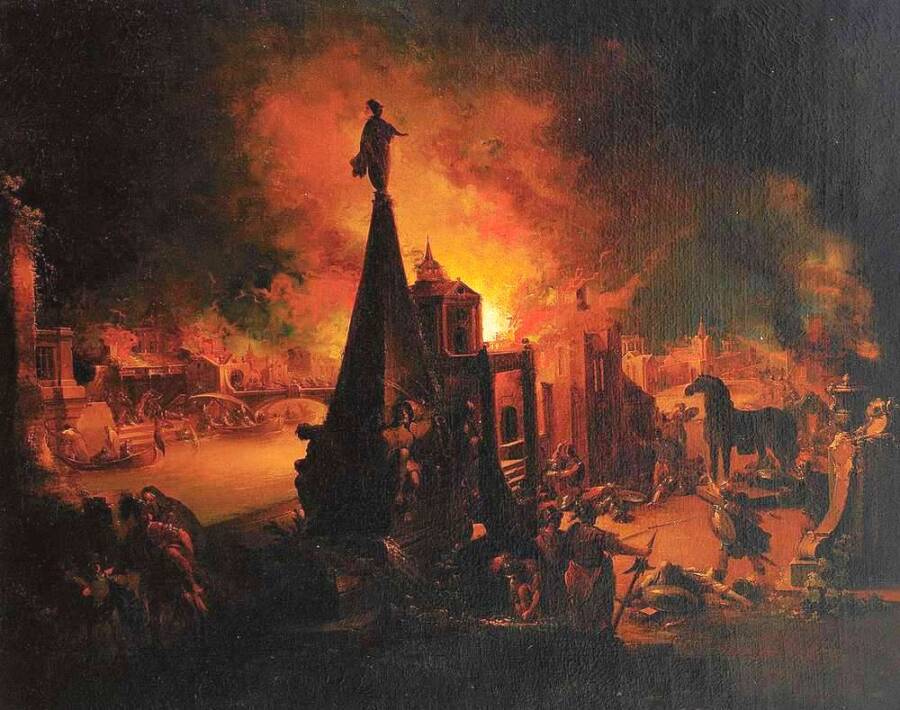
Public DomainThe burning of Troy.
While certain parts of the tale are clearly myth, modern discoveries have begun to reframe the story. In the 1870s, German businessman and amateur archaeologist Heinrich Schliemann serendipitously rediscovered the presumed ruins of Troy while traveling through Turkey. Since then, various excavations have sought to learn more about the ancient city.
Now, archaeological evidence is indeed showing that there may indeed have been a major conflict here around the time of the Late Bronze Age, suggesting that the story of the Trojan War may not be entirely fictional after all.
After reading about the new excavations in Troy, read all about the Greek gods and goddesses of Mount Olympus. Then, check out the stories of 11 fearsome gladiators from ancient Rome.





